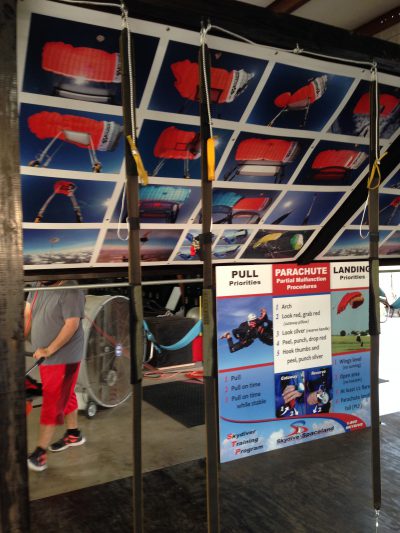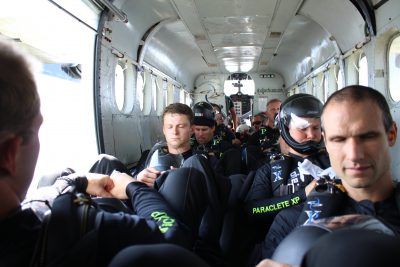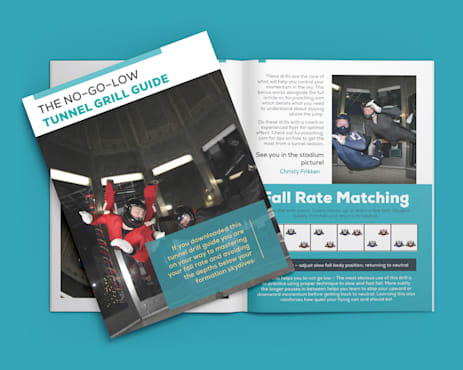Two-sided approach to safety
Monday, July 5, 2021

- Christy Frikken
- 7/05/21
- 0
- Safety
What causes safety-related errors? Failure to create good habits? Or complacency?
Breaking down the problem
When you analyze a safety-related incident, there are often multiple places in the chain of events that could have steered the situation to a better outcome. Sometimes, you can see where inserting either a better habit, like a handle check, would have solved the issue. Other times paying more attention, like awareness of handles on the climb out, would have averted the problem.
Habits become to mindless, and being “extra on guard” against complacency is too short term of a solution. Wrap both of these solutions around each other to make a lasting positive impact.
Developing great habits
Automatic
The great thing about developing and keeping habits is that they happen without any thought. They become just something you do every time, whether you mean to or not. If you do them often enough long enough, it becomes uncomfortable to NOT act on a habit.
This consistency is great – I can’t pick up my rig without doing a gear check. It feels weird. I can’t board a plane without touching my handles. These actions build-up a routine that builds safety into it.
Going through motions
But habits alone are not enough. Have you ever done a gear check but moments later forget doing it? The downside of habits is they stick you on auto-pilot. In our gear check example, you may be looking right at your equipment, but not processing what you are seeing. You did the checklist but didn’t check anything.
Presence
Being in the moment
The opposite of autopilot is being engaged in what is happening and only focusing on relevant information. If you make a conscious effort to do so, you can pay attention to any activity for a short period of time.
Under canopy, you can focus on lunch, or more wisely, you can focus on traffic, patterns, and conditions. Seeing what is going on, casting a wide net for relevant information helps people react quickly to dangerous situations. We should strive for this presence of mind at all times.
Fades and is inconsistent
The bad news is that it is impossible to stay hyper-vigilant all the time. We do lots of jumps, get comfortable, and our heads try to conserve energy or direct us to other mental tasks. You can force yourself to stay present for short periods, but you can’t keep yourself focused forever.
This is why you pay super close attention at pull time after a rousing safety briefing, but sadly stop being as attuned after a day or two. Or perhaps you have a scare at break-off and spend the rest of the camp tracking like a champion. Of course, the fear fades, and you relax again a few dozen jumps later.
Balance both to strengthen both
The good news is I think you can develop both sides to strengthen each tactic.
Design awesome habits
First, spend time developing great habits. Decide with the intention on what patterns you want. Think about what routines you want to establish around gear checks, visualizing emergency procedures, packing, handle and pin checks, tracking plans, pull time, canopy flight, and any other important area of your skydive. What are the little things you can train yourself to do every time that will avoid incidents?
Cultivate awareness
Second, recognize what tasks require your immediate and full attention. Notice when you stray from this and practice snapping yourself out of it. It feels very zen, but spend as much time in the “now” as you can while you are skydiving.
Now the super-powered bit
Finally, roll them together by creating awareness cues INTO your habits. Pick an exact trigger at a critical moment, and make a new habit of bringing your focus onto your task.
My favorite example is turning on my Vigil for my morning gear check. The last thing I examine is the confirmation screen. I use this cue to ask myself if I was truly paying attention or distracted by something else. If I was checking off boxes and not genuinely considering my gear, I will recheck it. I consciously choose to remember that moment I looked at the screen.
Create options for triggers in your routine, and make them a habit. Suggestions for cues could be crossing a crack in the sidewalk before the boarding area, 1000 feet beep, the red light, pulling, collapsing a slider, or cocking your pilot chute. You can choose anything that precedes a crucial attention-worthy event.
Use the habit triggers to pay more attention to your gear checks, emergency procedures, canopy ride, or packing.
By playing them off each other, you can zap complacency at critical moments every time, instead of letting your attention wax and wane. You can learn to pay more attention to the present moment and improve your safety habits!





